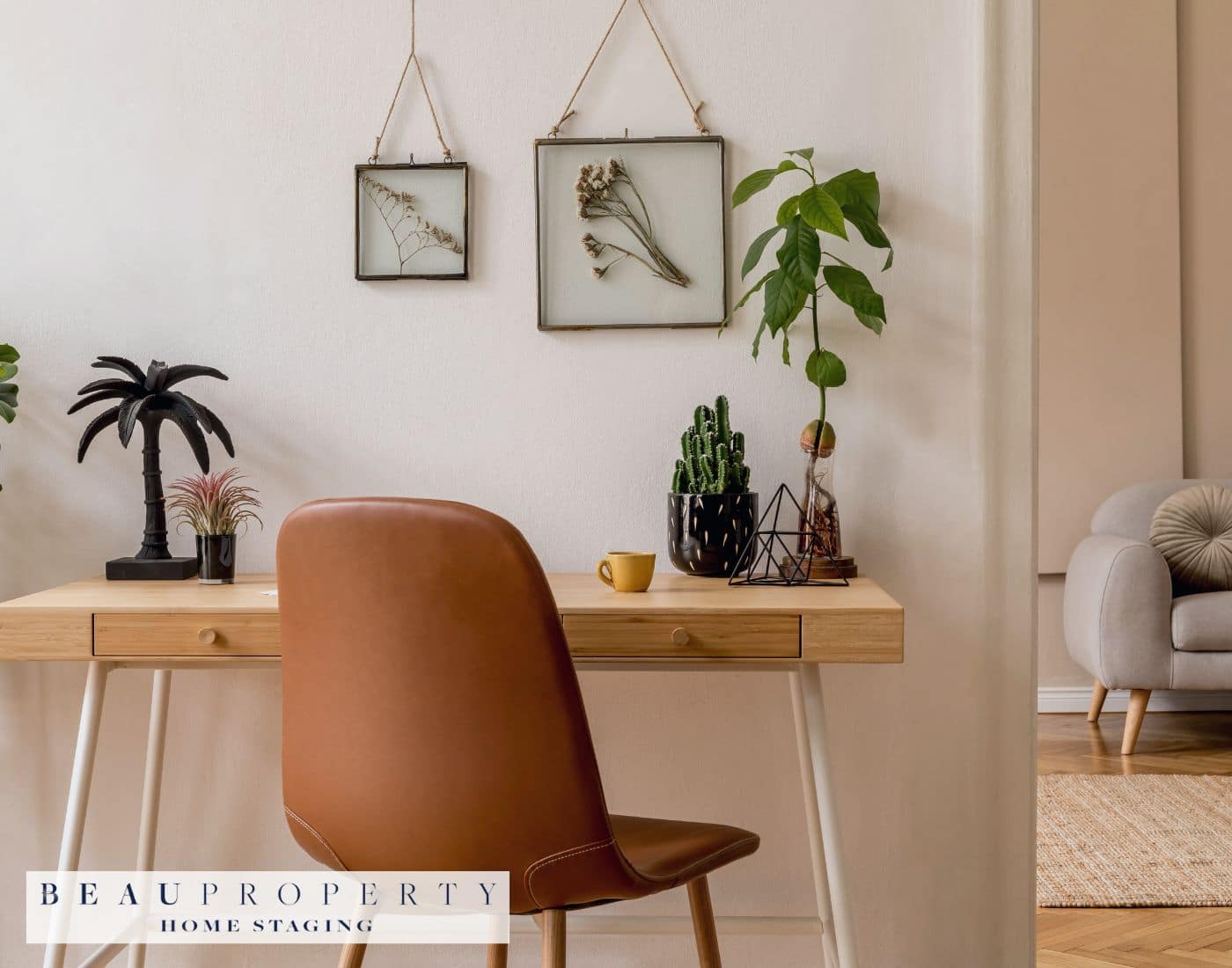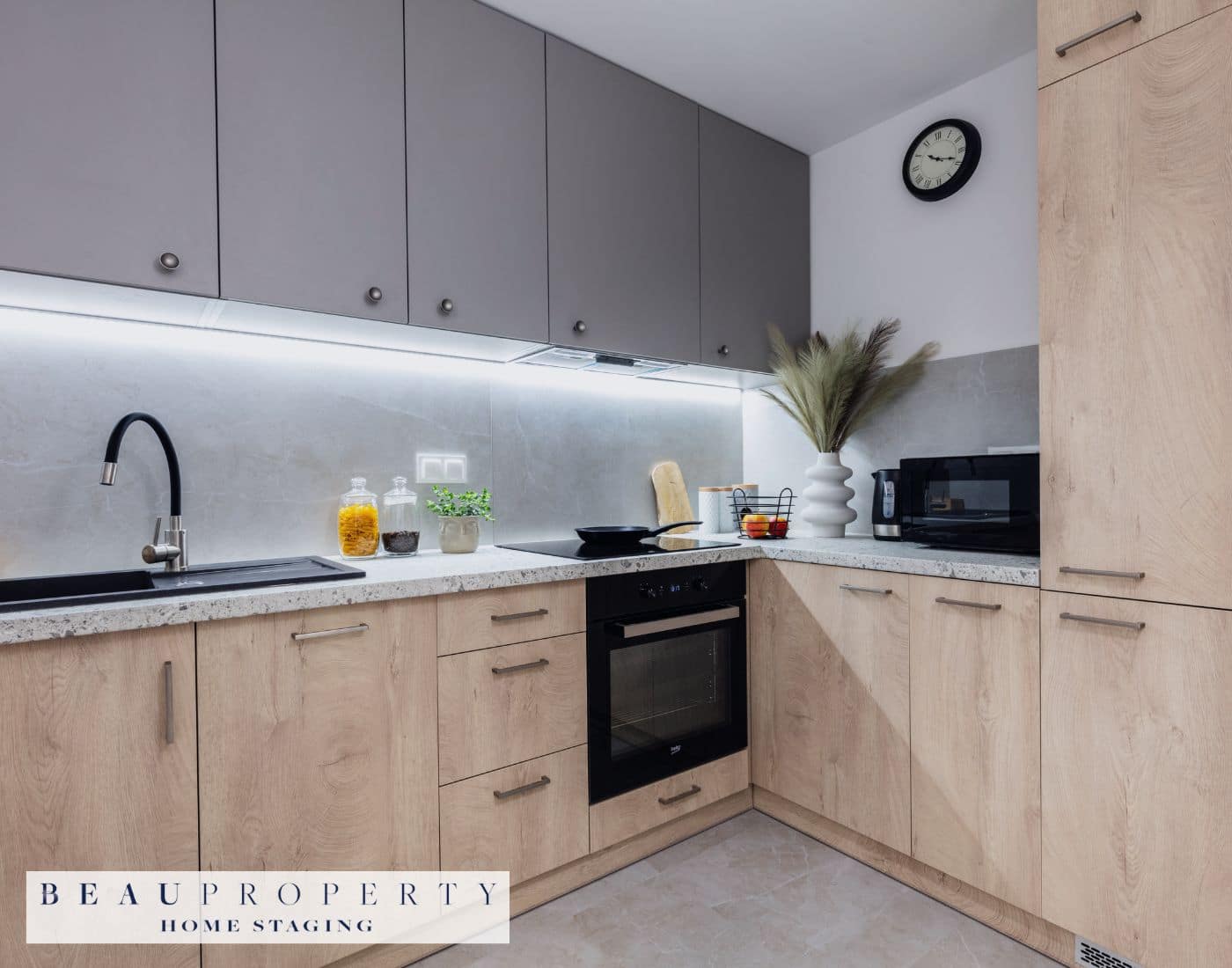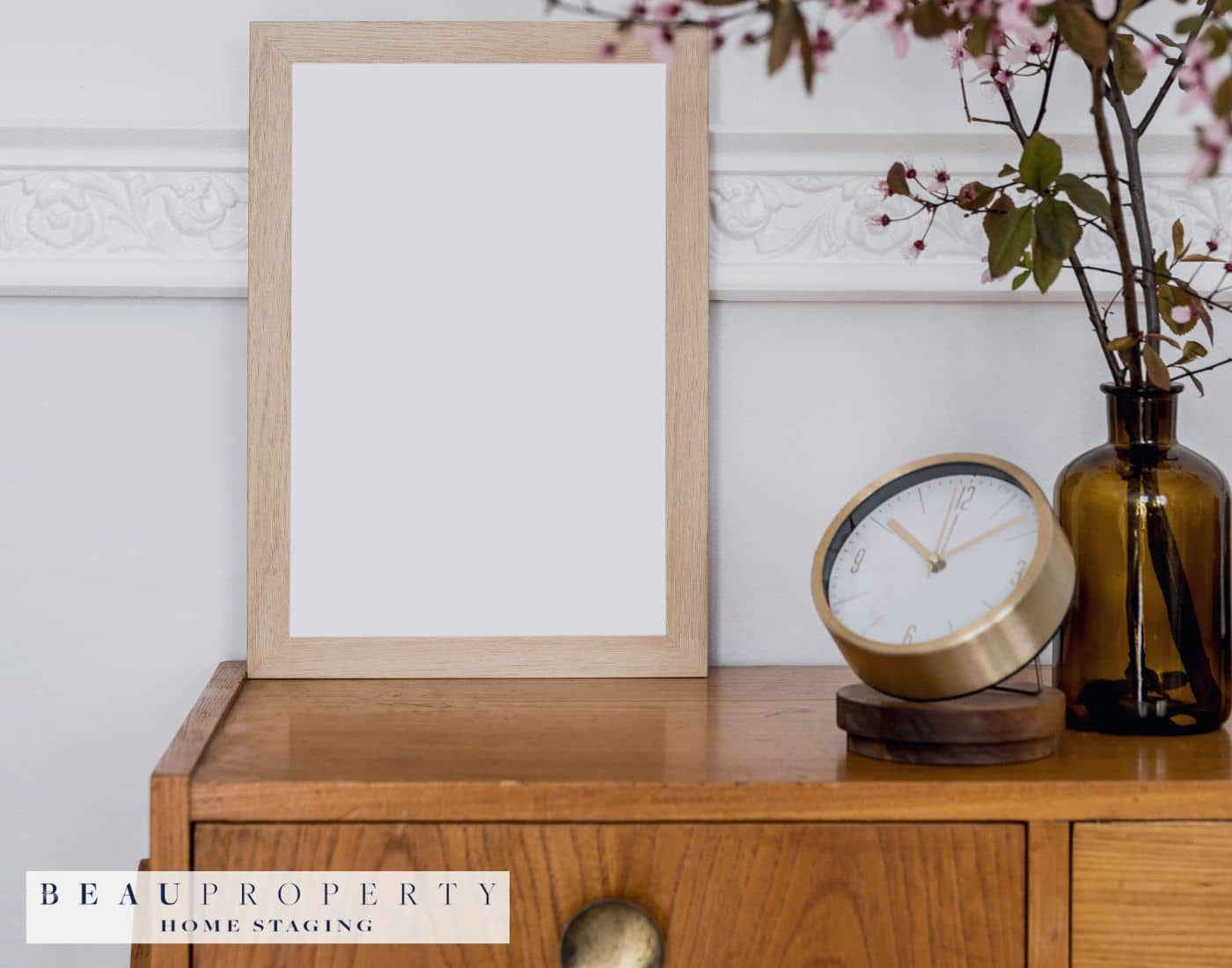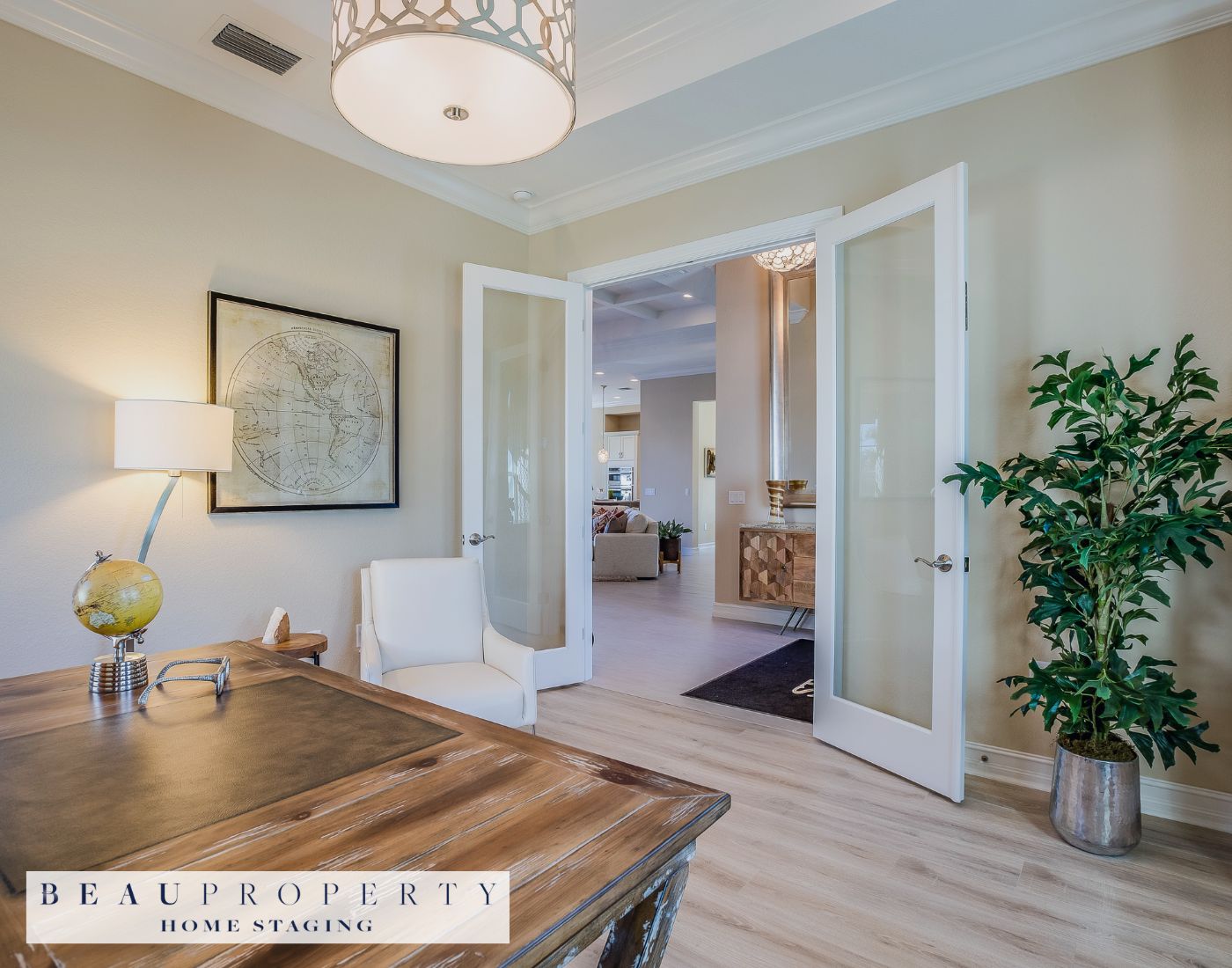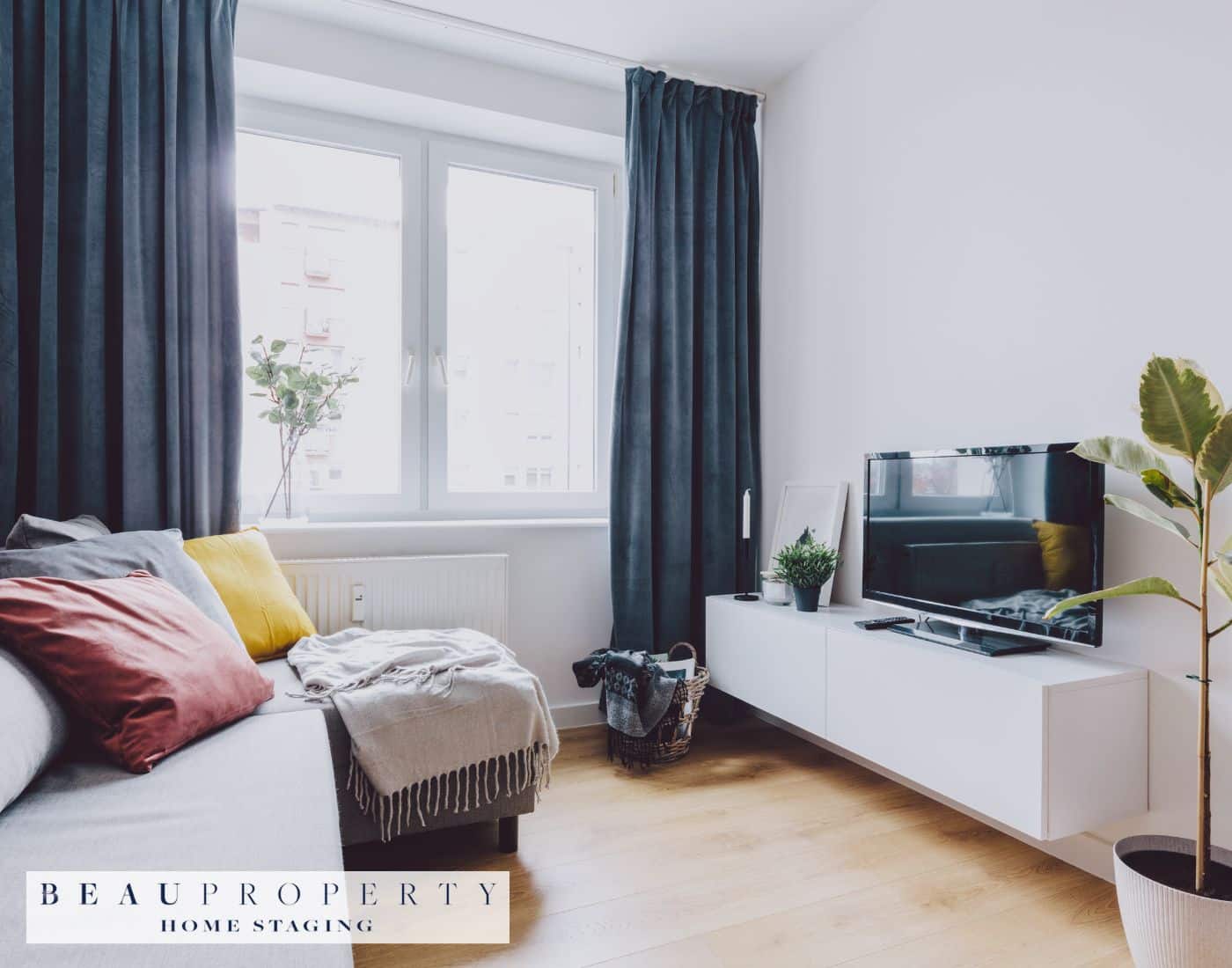Introduction to Home Staging
Home staging is an essential aspect of modern real estate marketing, designed to present a property in its best light to potential buyers. At its core, home staging involves the artful arrangement and styling of a home to enhance its aesthetic appeal and marketability. This often includes redecorating, rearranging furniture, and a thorough cleaning to ensure the property appeals to the widest audience possible. The primary aim is to help buyers visualise themselves living in the space and to make a lasting first impression.
Definition of Home Staging
Home staging is distinct from interior decorating, which is about personalising a space for specific tastes. Instead, staging focuses on depersonalising and neutralising a home to make it universally attractive. It’s about setting a stage, highlighting the home’s strengths, and minimising its weaknesses. By doing so, the home speaks to potential buyers, allowing them to see the possibilities a space offers.
Goal of Staging: Appeal to Potential Buyers
The ultimate goal of home staging is to appeal to as many potential buyers as possible, ensuring a quicker sale at a higher price. By creating a warm and inviting atmosphere, staging transforms a house into a desirable product on the market. This transformation helps buyers imagine their own lives unfolding in the space, rather than being distracted by the seller’s personal belongings or design choices.
Importance of First Impressions in Property Sales
First impressions are crucial during property viewings. A staged home makes a strong visual impact from the moment a prospective buyer steps through the door. The arrangement and condition of the space often influence buyers’ emotional responses, potentially leading to a faster sale. When a home is staged, it appears more move-in-ready, sparing buyers from envisioning any major work. This is key, as today’s home buyers often seek properties that require minimal effort before moving in.
The implications of first impressions extend beyond in-person visits. With a significant part of the home-buying process taking place online, high-quality, staged images in listings can make a property more attractive and memorable. By ensuring a property looks its best both online and in person, staging plays a vital role in real estate marketing.
This foundational understanding of home staging sets the stage for exploring its impact on property sales, where we’ll see how statistics and buyer perceptions are influenced by well-executed staging.
The Impact of Staging on Property Sales
Statistical Benefits: Faster Sales and Higher Prices
Home staging has proven itself as a game changer in the world of real estate sales. Stagers have long sung its praises, but what do the numbers say? Well, staged homes tend to sell significantly faster—up to three to thirty times quicker than their unstaged counterparts. This speed is not just about getting a quick sale; it can considerably shorten the stressful period of balancing multiple mortgages or renting a property out of necessity.
Not only does staging fast-track the selling process, but it can also lead to higher sale prices. Professionally staged homes often achieve a 5% to 20% higher price than unstaged homes. This striking figure underscores the potential return on investment that staging can deliver, offering sellers a valuable edge in the market.
Buyer Perception: Easier Visualisation
Staging plays a critical role in shaping buyer perception. It creates a welcoming, appealing atmosphere that helps buyers picture themselves living in the space. By depersonalising the environment and styling it with broader appeal, buyers can form an emotional connection to the home. This visualisation is vital for encouraging potential buyers to make an offer. Staging essentially sets the scene, allowing buyers to imagine their lives unfolding in each room.
Staging’s Role in Competitive Real Estate Markets
Today’s real estate markets are fiercely competitive. In such environments, creating distinguished and memorable listings is paramount. So, how does staging fit into this puzzle? Well-staged homes especially stand out, capturing buyers’ attention and creating a sense of urgency. The appealing aesthetic detail that staging brings often sways buyers when several similar properties are available.
Overall, staging amplifies a home’s selling potential and makes it a standout in competitive marketplaces. By enhancing both the speed of sales and the attractiveness of the offer prices, it ensures sellers get the best possible outcomes from the real estate market. As we transition to looking at key staging areas, these insights highlight how a staged property conforms to both visual and financial expectations, setting the stage for success.
Key Areas to Focus on When Staging
Staging Living Rooms, Kitchens, and Primary Bedrooms
When it comes to home staging, targeting the right rooms can make all the difference. The living room, kitchen, and primary bedroom are the heavy hitters. These spaces are where potential buyers often form their emotional connections to a home. A well-staged living room can showcase a welcoming atmosphere, prompting buyers to visualise leisurely evenings with family or friends. Meanwhile, a kitchen should be enticing, highlighting not just functionality but also the potential for culinary creativity. The primary bedroom should whisper comfort and tranquillity, creating a retreat-like vibe that resonates emotionally.
When each of these rooms is thoughtfully presented, buyers are more likely to feel at home, making them more inclined to make an offer.
The 3-Foot 5-Foot Rule in Staging
The “3-foot 5-foot rule” is crucial in staging because it influences how details are perceived. At three feet, potential buyers will notice small details like the condition of surfaces and decor accents. Beyond five feet, they perceive the space’s overall design. Balancing these perceptions means ensuring that both detailed-oriented decor and broader stylistic elements complement each other.
This strategy invites buyers to appreciate a room’s finer points and overarching ambience, thus painting a complete picture without overwhelming them.
Balancing Decluttering with Strategic Decor
Decluttering is at the core of effective staging. A clutter-free environment allows rooms to appear more spacious and buyers to focus on the property itself rather than distractions. However, removing too much can result in a space feeling barren or impersonal. The trick is in striking the right balance by incorporating strategic decor.
Consider using neutral tones and simple yet elegant furnishings. Personal touches should be minimised, but subtle decor elements like vases, art pieces, or throw pillows can create warmth and style without being intrusive. This balance ensures that the home feels inhabitable while allowing buyers to visualise their own lives within the rooms.
Professional Staging vs. DIY Approaches
Cost Considerations for Professional Staging Services
When considering professional staging, costs can vary widely based on the property’s size and location. Professionally staged homes often spend 73% less time on the market and can fetch higher prices, offsetting the upfront investment.
DIY Staging Tips for Budget-Conscious Sellers
For homeowners looking to save, DIY staging offers a more affordable alternative. The key is to focus on impactful changes without breaking the bank:
- Declutter and Clean: Start by deep cleaning and decluttering your space. Depersonalising helps buyers imagine themselves in the home.
- Smart Furniture Rearrangement: Rearrange existing furniture to create inviting spaces, aiming for open views and free movement.
- Paint and Lighting: Freshen up rooms with neutral paint colours to create a blank canvas. Enhance natural light wherever possible to make spaces feel larger and more inviting.
- Accessorise on a Budget: Use thrift stores and yard sales to acquire inexpensive yet tasteful decor. Small touches can add personality without significant expense.
Weighing the Pros and Cons
Both professional and DIY staging have distinct advantages and drawbacks. Professional staging might lead to quicker sales and higher offers but demands a substantial financial commitment upfront. DIY staging is more financially accessible and allows homeowners to retain control over the process, though it requires more personal effort and time.
Choosing between the two primarily depends on your budget, timeline, and willingness to tackle staging tasks yourself. For some, the peace of mind offered by professionals is worth the extra cost; for others, the satisfaction of a hands-on approach outweighs the benefits of a professional touch.
The Role of Technology in Modern Staging
Importance of High-Quality Photos and Virtual Tours
High-quality photos are vital in real estate marketing, serving as a primary tool to attract potential buyers. Clear, professional images enhance a property’s appeal, showcasing it in the best possible light. Studies show that listings with high-resolution images sell faster and often at higher prices than those with amateur photos. These images are crucial for making a powerful first impression, often leading to increased buyer interest and engagement.
Virtual tours offer buyers the chance to explore properties remotely, providing a realistic and immersive experience. They are particularly beneficial for buyers unable to visit in person, offering a comprehensive view of the home’s layout and features. Virtual tours enhance accessibility and convenience, broadening the property’s reach by engaging an audience 24/7.
Use of Videos in Showcasing Staged Properties
Videos are a powerful tool for showcasing properties, providing dynamic and engaging content that photos alone cannot offer. A well-produced video engages potential buyers, offering a walkthrough experience that highlights a property’s unique features and ambiance. Properties listed with videos receive significantly more inquiries, as videos can evoke emotions and create a sense of connection with potential buyers.
Effective video marketing includes virtual walkthroughs, neighbourhood tours, and client testimonials, each tailored to engage viewers and highlight different aspects of the property. Professional videography, combined with storytelling, ensures the content remains compelling and memorable.
Leveraging Social Media for Marketing Staged Homes
Social media platforms are indispensable for modern real estate marketing. They enable agents and stagers to reach a broader, more targeted audience. By sharing high-quality images, virtual tours, and videos, real estate professionals can engage potential clients, build brand awareness, and generate leads effectively.
The visual nature of platforms like Instagram makes them ideal for showcasing property aesthetics. Meanwhile, Facebook and Linkedln offer opportunities for storytelling and connecting with a professional audience. Each platform provides unique features that can be harnessed to maximise engagement, such as live videos and interactive posts.
With the right technological tools, staging can significantly enhance a property’s marketability. Embracing these technologies helps real estate professionals stand out in a competitive market.
Measuring the Return on Investment (ROI) of Staging
Home staging is not just an aesthetic upgrade; it’s a strategic investment that can significantly boost a property’s marketability and financial return. Let’s delve into the key aspects of assessing the ROI of home staging.
Impact on Time-on-Market for Staged Properties
Time is often just as crucial as money in real estate. Staged homes generally spend 73% less time on the market compared to non-staged ones, revealing staging as an effective strategy for speeding up sales. This rapid turnaround is largely due to staging’s ability to capture buyer interest quickly, creating lasting impressions and encouraging faster decisions.
Long-term Benefits of Staging in Real Estate Marketing
The benefits of staging extend beyond immediate sales. Staging helps establish a positive first impression and increases perceived home value, both of which are critical for appraisals and future resale. Furthermore, staged homes often fetch higher bids, encouraging negotiation at favourable prices, regardless of market conditions.
Staging offers a competitive edge in any market, often balancing out the cost with increased sale prices and faster sales. This return speaks volumes about its strategic importance in both present and future real estate dealings.
Conclusion: The Future of Home Staging in Real Estate
Evolving Buyer Expectations
The landscape of real estate is continuously shaped by the influence of media. Property shows and online platforms have led buyers to expect homes that resemble perfectly curated spaces. A significant percentage of buyers have become accustomed to seeing homes staged to look like those in advertisements or on TV. This change in expectations challenges sellers to present their properties in the best possible light, often necessitating professional staging. The rise in virtual tours and online listings adds to this pressure, as digital images are often the first impression potential buyers have.
Growing Importance in a Digital-First Market
Home staging is becoming increasingly vital in today’s digital-first real estate market. High-quality images and videos, enhanced through expert staging, significantly impact a buyer’s interest. Virtual staging provides a versatile option, allowing properties to be tailored to buyer preferences swiftly and cost-effectively, thus reaching a wider audience. As more buyers start their property search online, effective staging can make a home stand out in a crowded digital marketplace, boosting both visibility and appeal.
Adapting Staging Strategies
To stay relevant, home staging strategies must evolve alongside changing real estate trends. Sellers and agents must consider demographic shifts, such as the increasing influence of younger, tech-savvy buyers who rely heavily on social media for home discovery. This means embracing platforms like Instagram and TikTok for sharing visually engaging content. Understanding these platforms’ dynamics and leveraging them can greatly enhance a property’s marketability. Social media not only amplifies reach but also engages potential buyers in a more interactive way.
In navigating these dynamic trends, successful staging merges traditional techniques with modern technology. By doing so, sellers can ensure they meet and exceed buyer expectations, thus maintaining competitiveness in the ever-evolving real estate market. As we keep an eye on these shifts, it’s clear that adapting to new demands will be crucial for lasting success.

